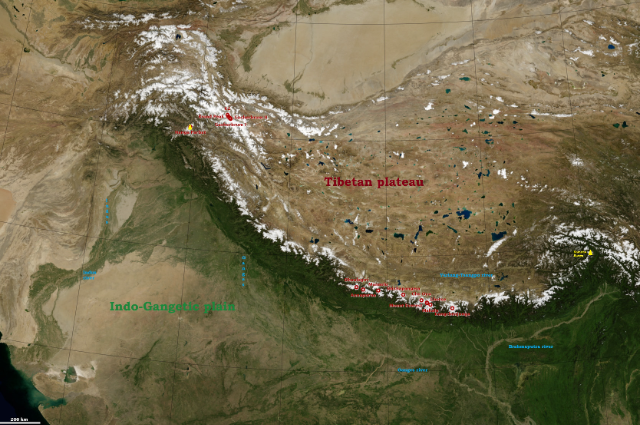The towering Himalayas, often revered as the “roof of the world,” have long been a symbol of strength and serenity. But beneath their snow-capped peaks lies an unsettling reality—an escalating crisis of natural disasters that we seem woefully unprepared for.
The recent avalanche in Uttarakhand and earthquake in Nepal serve as stark reminders of the growing vulnerabilities in this fragile ecosystem. While these disasters have natural causes, human actions—reckless infrastructure development, poor disaster preparedness, and the worsening effects of climate change—are accelerating their frequency and intensity.
Climate Change: The Silent Agitator
The Himalayas are warming at twice the global average, causing glaciers to melt at an alarming rate. This glacial retreat is not just an environmental issue—it is a direct trigger for avalanches, floods, and landslides. In Uttarakhand, scientists warn that rising temperatures are destabilizing ice formations, making deadly avalanches more frequent.
Nepal, on the other hand, is no stranger to seismic activity. But recent studies suggest that glacial melt may be increasing tectonic stress, subtly influencing earthquake patterns. The 6.1-magnitude quake that struck Nepal’s Sindhupalchok district last week was a chilling reminder of how fragile the region remains.
Unchecked Development: A Disaster in the Making
Even as the risks mount, governments continue to push aggressive infrastructure projects in the region. Uttarakhand has seen rapid expansion of highways and tunnels, often without proper environmental assessments. The recent avalanche near Mana Pass, which buried workers under tons of ice and snow, raises serious concerns about the safety of such projects.
In Nepal, Kathmandu’s unchecked urban sprawl has turned the city into a disaster-prone zone. Unplanned construction, often ignoring seismic safety regulations, left the city vulnerable during the 2015 earthquake—a tragedy that killed nearly 9,000 people. Today, little has changed. A major earthquake could once again cripple Nepal’s capital, and the government remains frighteningly underprepared.
Disaster Preparedness: A Policy Failure
Despite the Himalayas being one of the most disaster-prone regions in the world, both India and Nepal lag behind in effective disaster preparedness and response.
In Nepal, the Disaster Risk Reduction and Management Act (2017) exists on paper but lacks proper funding and implementation. Rescue teams are often under-equipped, and coordination among agencies is weak.
In India, the National Disaster Management Authority (NDMA) has made strides, but local preparedness remains poor. The 2021 Chamoli disaster, where an avalanche wiped out a hydropower project, exposed critical gaps in early warning systems.
When disaster has struck, the effort in responses is often too slow, too small, and too late. The aftermath of both the Uttarakhand avalanche and Nepal earthquake has once again highlighted these failures.
What Needs to Change?
Ignoring the Himalayan warning signs is no longer an option. Governments must act now to mitigate future disasters.
- Stronger Environmental Regulations: Infrastructure projects must be scientifically assessed before construction. Blind development in ecologically sensitive zones is a recipe for catastrophe.
- Investment in Early Warning Systems: Technology exists to predict avalanches, earthquakes, and landslides, but deployment remains inadequate.
- Disaster-Resilient Urban Planning: Both Nepal and India need stricter building codes and retrofitting of old structures to withstand seismic activity.
- Climate Action: Global warming is accelerating Himalayan disasters. Unless drastic measures are taken to curb emissions, the risks will only worsen.
A Race Against Time
The Himalayas have always been a land of myths and legends—home to gods and seekers. But today, the greatest test is not of faith, but of human foresight.
How many more lives must be lost before policymakers take decisive action? If we fail to heed the warnings now, the next disaster will not be a matter of ‘if,’ but ‘when.’

